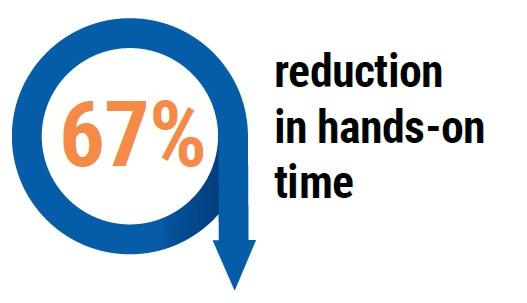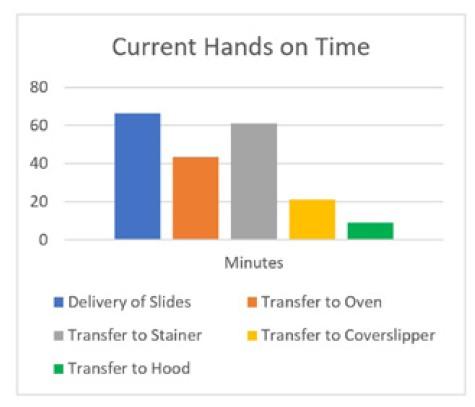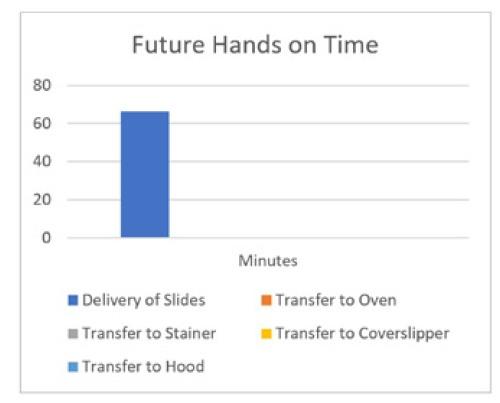
Increasing Routine Staining Productivity & Throughput Through Automation
The Leica Biosystems Process and Solutions Optimization team has partnered with a large province-based hospital to review the impact of automating their Routine Staining area. This hospital is most interested in the benefits they could realize in reducing their current hands-on intensive process and improving the throughput of their H&E staining.
During the Optimization Assessment, the Process and Solutions Optimization team observed the current processes involved in routine staining over several days. The team was able to benchmark the current processing time and number of steps involved.
It was observed that the staff is required to transfer the racks of slides through several steps in their process mainly due to the older instrumentation being used to perform routine staining. As a result, the workflow has been designed to transfer racks of slides to and from the oven, to and from the stainer, to and from the coverslipper, and to and from a vented hood for slide drying. Due to the high amount of hands-on time required, the lab only operates the routine staining for 10 hours each day.

Through Analyzing the data, the Process and Solutions Optimization team was able to show that by replacing the current Leica ST4040 Linear Staining System with detached coverslippers with two HistoCore SPECTRA Workstations, this academic medical facility could realize a 45.4% reduction in hands-on time. Further analysis showed that by modifying their current workflow, another 21.6% reduction could be achieved.

By combining integrated solutions and optimizing efficiencies, this facility could reach an overall 67% reduction of hands-on time for routine staining. Because of the reduction of hands-on time required, they could increase the hours of operation of routine staining to 16 hours each day, which is the total number of staffed hours for the laboratory. These changes would help increase the laboratory’s capacity and reduce their turn-around-time for delivering slides to their Pathologists.

Projections and Realized Results are specific to the institution where they were obtained and may not reflect the results achievable at other institutions.
Leica Biosystems 콘텐츠는 Leica Biosystems 웹사이트 이용 약관의 적용을 받으며, 이용 약관은 다음에서 확인할 수 있습니다. 법적고지. 라이카 바이오시스템즈 웨비나, 교육 프레젠테이션 및 관련 자료는 특별 주제 관련 일반 정보를 제공하지만 의료, 규정 또는 법률 상담으로 제공되지 않으며 해석되어서는 안 됩니다. 관점과 의견은 발표자/저자의 개인 관점과 의견이며 라이카 바이오시스템즈, 그 직원 또는 대행사의 관점이나 의견을 나타내거나 반영하지 않습니다. 제3자 자원 또는 콘텐츠에 대한 액세스를 제공하는 콘텐츠에 포함된 모든 링크는 오직 편의를 위해 제공됩니다.
모든 제품 사용에 다양한 제품 및 장치의 제품 정보 가이드, 부속 문서 및 작동 설명서를 참조해야 합니다.
Copyright © 2024 Leica Biosystems division of Leica Microsystems, Inc. and its Leica Biosystems affiliates. All rights reserved. LEICA and the Leica Logo are registered trademarks of Leica Microsystems IR GmbH.